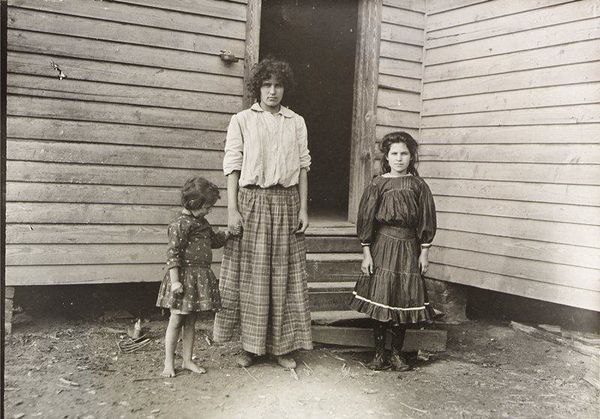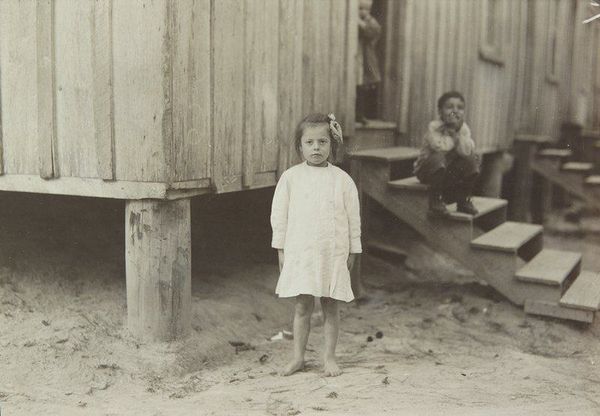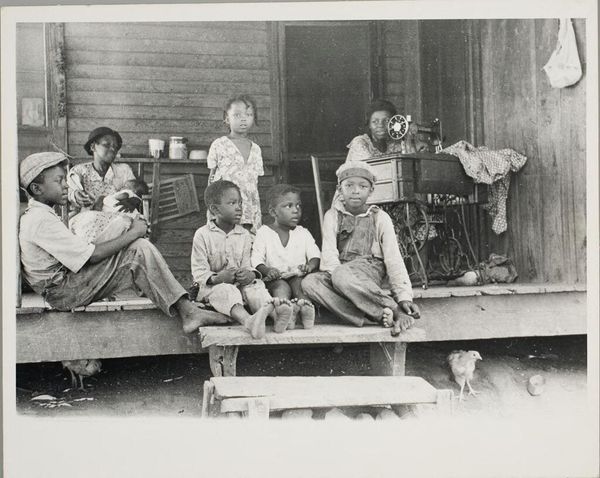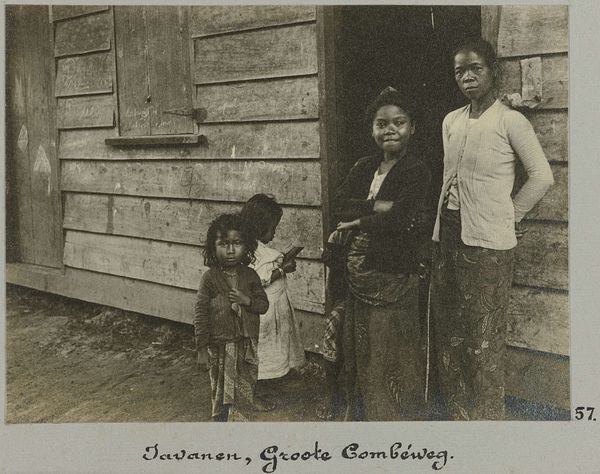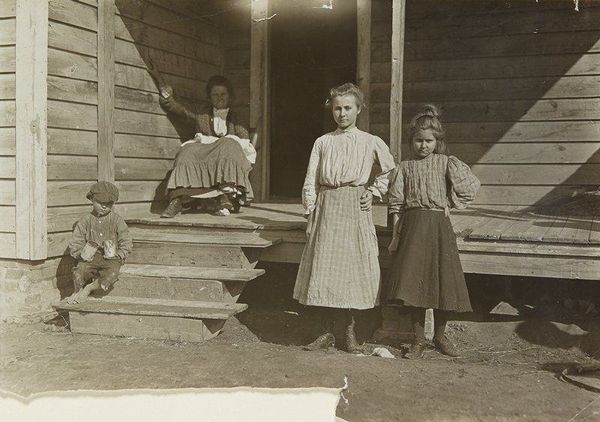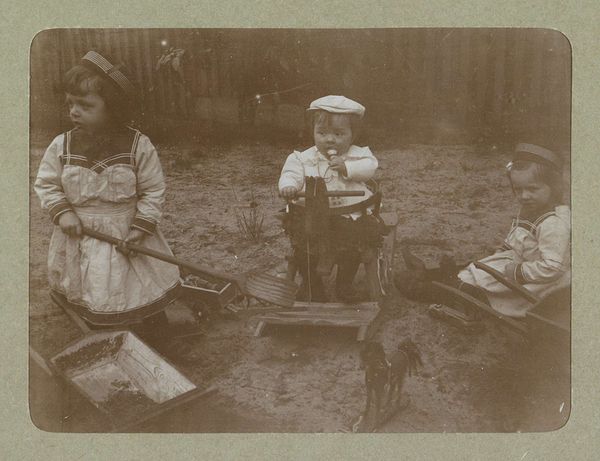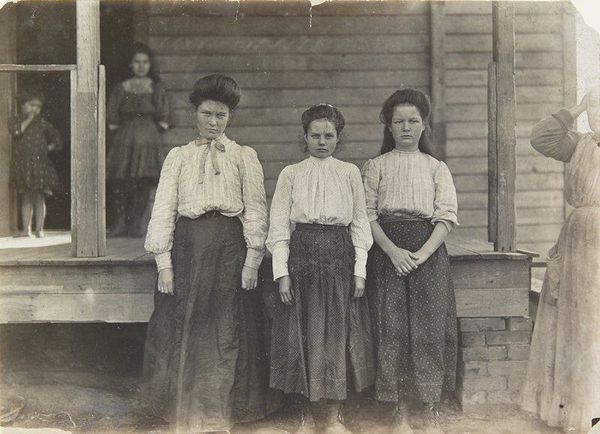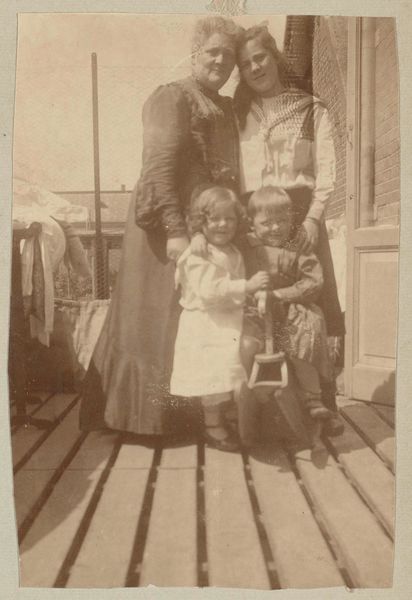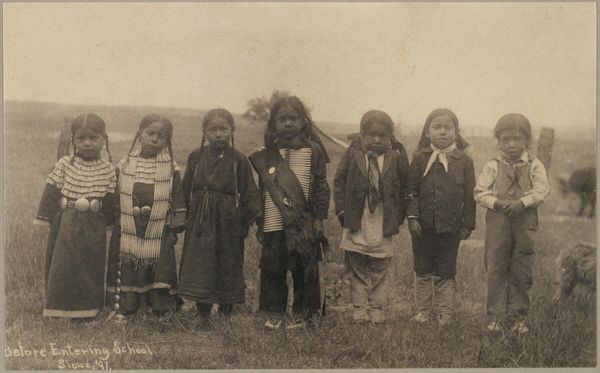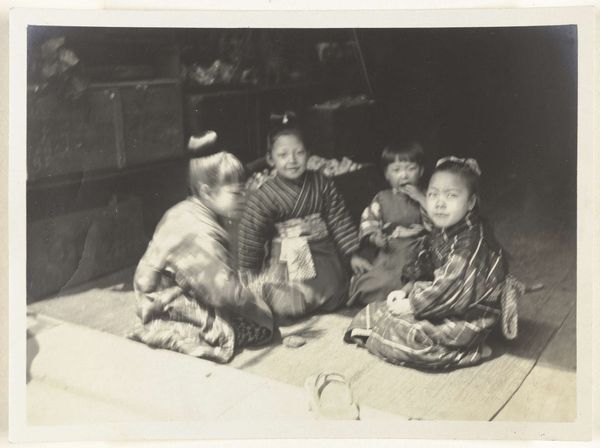
albumen-print, photography, albumen-print
#
albumen-print
#
print photography
#
archive photography
#
photography
#
historical photography
#
albumen-print
Dimensions: height 81 mm, width 111 mm
Copyright: Rijks Museum: Open Domain
Curator: Hendrik Doijer created this albumen print, "Javanen, Groote Combéweg," sometime between 1903 and 1910. It portrays three individuals—a seated adult and two children—posed in front of a wooden building. What strikes you first about this piece? Editor: There's a stark simplicity, a rawness to it. The weathered wood of the building acts as a textured backdrop, almost sculptural. It emphasizes the figures in the foreground with its horizontal lines, providing visual anchors and a sense of place. Curator: Absolutely. Consider the historical context. Doijer, a Dutch artist, created this image during a period of Dutch colonial rule in Indonesia. Photography was then often deployed to reinforce power structures. Think of the ethnographic studies, the "civilizing mission" portrayed through carefully constructed narratives. How do you see this reflected, or resisted, here? Editor: While it shares some formal qualities with ethnographic photography, the subjects don't seem "exoticized." Their direct gazes challenge a purely objectifying view. The chiaroscuro effect, where light emphasizes certain areas while others recede into shadow, lends a solemnity. Curator: Precisely. The use of light isn’t just aesthetic; it's rhetorical. The faces are illuminated, granting them presence, dignity. However, we can’t ignore the potential power dynamic inherent in the photographer’s position. Doijer, likely representing colonial authority, capturing this domestic scene, freezing a moment for Western consumption. The girls look as though they’ve been interrupted. Editor: That play of light is beautifully managed, however. Notice how the vertical axis created by the doorway splits the image. One girl blends with the wooden building, the other stands away from her mother and holds the viewers' attention. Curator: Yes, there is an intimacy, yet it is carefully curated. We are offered a glimpse into their lives but from a position of distance and implicit control. We are allowed to "see" only what the colonizer permits. This raises critical questions about representation, agency, and the ethics of looking. What are the girls feeling? Are they accepting of Doijer? Are they being exploited? We are left with endless unanswered questions and thus are left deeply uncomfortable. Editor: From a compositional viewpoint, Doijer expertly used a simple setting, light, shadow and line, elevating everyday life and providing a lasting portrait. He may have been exploiting the subjects for monetary or colonial gain, however this can't detract from the talent required to produce the photograph itself. Curator: Ultimately, engaging with this image requires acknowledging the complex power dynamics it embodies and invites us to examine our own role as viewers in perpetuating, or challenging, historical narratives. We shouldn’t dismiss works from this era, but rather question what the intention and affect was when they were produced. Editor: Agreed. It's in confronting those tensions and layers of interpretation that this piece continues to resonate.
Comments
No comments
Be the first to comment and join the conversation on the ultimate creative platform.
